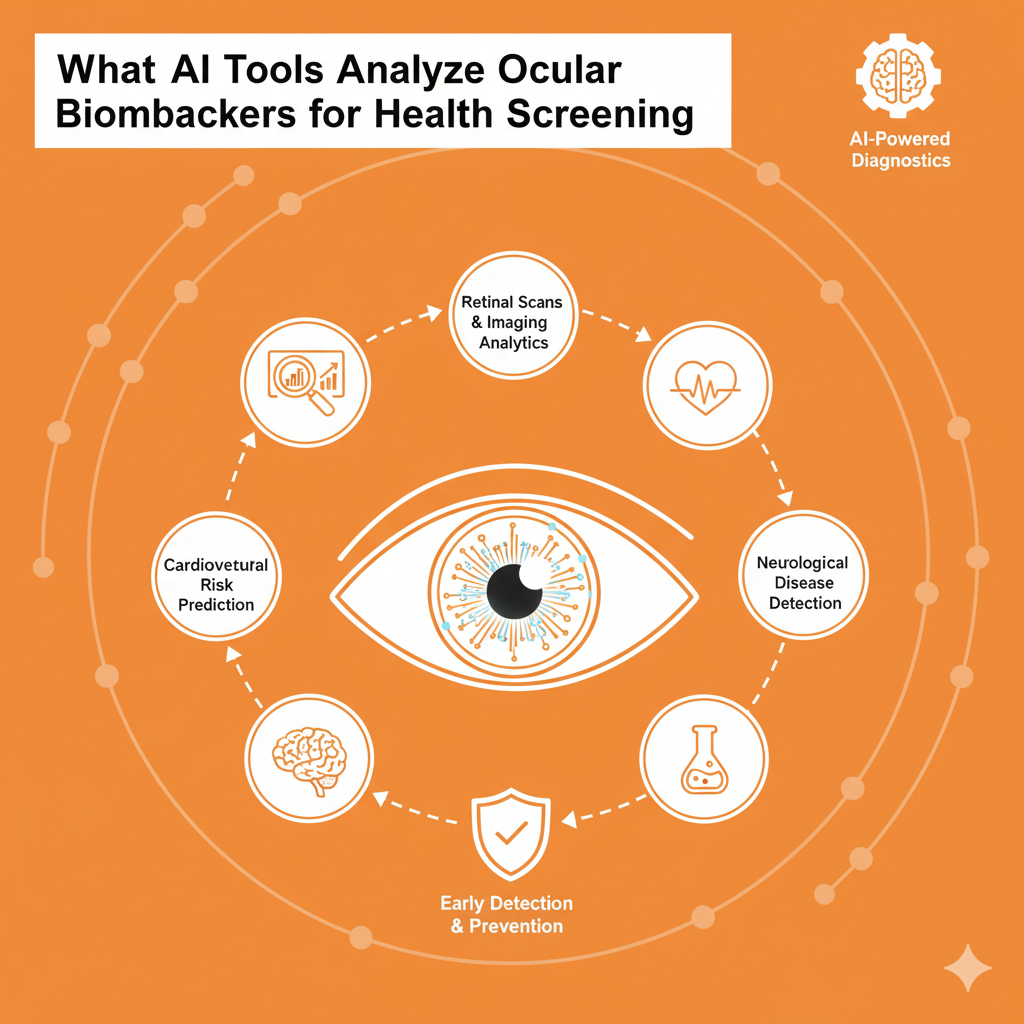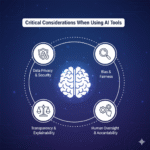Our eyes are often called “windows to the body,” and for good reason. The structures and microvasculature of the eye can reveal early signs of systemic health issues, from diabetes and hypertension to neurodegenerative diseases. In recent years, AI-powered tools have revolutionized ocular biomarker analysis, enabling faster, more precise, and scalable health screening.
If you’re curious about which AI tools are leading this field and how they are applied, this article will take you through the top platforms, their features, and practical applications in 2025.
Why Ocular Biomarkers Are Critical
Ocular biomarkers are measurable features in the eye that correlate with systemic health. Some key examples include:
- Retinal microvascular changes: Linked to hypertension, diabetes, and cardiovascular risk.
- Optic nerve head morphology: Changes can indicate glaucoma or intracranial pressure abnormalities.
- Retinal nerve fiber layer thickness: Can signal neurodegenerative disorders like Alzheimer’s.
- Foveal and macular patterns: Altered patterns may indicate early diabetic retinopathy or macular degeneration.
Traditionally, identifying these biomarkers required expert ophthalmologists and high-end imaging equipment. AI now allows for automated detection, quantitative analysis, and risk prediction, expanding access to early screening.
Key AI Tools for Analyzing Ocular Biomarkers
Here are some of the most advanced AI platforms currently used for ocular biomarker-based health screening:
1. Google DeepMind Health
- Focus: Broad ocular analysis, disease prediction.
- Capabilities:
- Uses deep learning to analyze retinal scans for over 50 eye conditions.
- Predicts cardiovascular risk factors such as blood pressure and age from fundus images.
- Integrates OCT and fundus photography for multi-modal analysis.
- Practical Use: Hospitals and research centers leverage DeepMind’s AI for both ophthalmic screening and systemic health insights.
2. IDx-DR
- Focus: Diabetic retinopathy detection.
- Capabilities:
- FDA-approved autonomous AI system.
- Detects early signs of diabetic retinopathy from retinal images without human intervention.
- Provides actionable screening results for primary care clinics.
- Practical Use: Enables large-scale diabetic retinopathy screening programs with minimal specialist involvement.
3. Eyenuk EyeArt
- Focus: Diabetic retinopathy and macular edema.
- Capabilities:
- FDA-cleared for autonomous detection.
- Uses AI to grade severity of retinal lesions.
- Integrates seamlessly with clinic workflows for high-volume screening.
- Practical Use: Community health centers use EyeArt to prioritize patients for follow-up care.
4. RetmarkerDR
- Focus: Longitudinal retinal disease tracking.
- Capabilities:
- AI algorithms detect subtle changes in retinal vasculature and microaneurysms.
- Monitors disease progression over time.
- Provides risk scoring to optimize intervention timing.
- Practical Use: Hospitals and clinical research programs track diabetic retinopathy progression in large patient cohorts.
5. ZEISS VISUHEALTH AI
- Focus: Multi-condition ocular biomarker detection.
- Capabilities:
- AI analyzes OCT and fundus images to detect glaucoma, AMD, and vascular changes.
- Offers quantitative metrics for retinal thickness, nerve fiber layer, and optic disc morphology.
- Practical Use: Ophthalmology clinics use ZEISS AI for precise disease detection and monitoring, integrating seamlessly with imaging devices.
6. AIRA Matrix
- Focus: Research and clinical-grade ocular biomarker analysis.
- Capabilities:
- Supports fundus and OCT imaging.
- Quantifies microvascular changes, nerve fiber thickness, and macular morphology.
- Cloud-based platform with multi-site support.
- Practical Use: Used in multicenter research trials studying systemic diseases and neurodegenerative biomarkers.
7. Tomey AI Suite
- Focus: Multi-modality ocular diagnostics.
- Capabilities:
- Analyzes anterior segment images, retinal fundus images, and corneal parameters.
- Detects ocular biomarkers for glaucoma, diabetic retinopathy, and hypertension.
- Provides predictive risk scoring for systemic disease correlation.
- Practical Use: Used in specialized eye hospitals for integrated ophthalmic and systemic health assessment.
How These Tools Are Transforming Health Screening
- Early Detection: AI can detect minute vascular changes or nerve fiber thinning that a human may miss, enabling early intervention.
- Scalability: High-volume population screening becomes feasible without relying on a large number of specialists.
- Predictive Health Insights: Beyond ocular disease, AI can estimate cardiovascular risk, blood pressure, and even neurodegenerative risk from retinal images.
- Remote and Telemedicine Applications: Some platforms allow images to be captured in remote clinics and analyzed centrally via cloud-based AI.
Critical Considerations When Using AI for Ocular Biomarkers
While these tools are powerful, using them responsibly requires attention:
- Regulatory Approval: Ensure the tool is FDA, CE, or relevant authority-approved for clinical use.
- Data Quality: AI accuracy depends on the quality of retinal scans. Poor imaging can lead to misdiagnosis.
- Integration with Clinical Workflows: The AI system should work seamlessly with existing EMR or imaging software.
- Human Oversight: Clinicians should review AI outputs to validate results, especially for high-risk patients.
- Ethics and Privacy: Retinal images can reveal sensitive health information; compliance with HIPAA, GDPR, or local regulations is essential.
The Future of AI in Ocular Biomarker Analysis
The next frontier involves:
- Multi-disease prediction: Using a single retinal scan to assess cardiovascular, metabolic, and neurological health.
- Real-time AI in clinics: Immediate insights during routine eye exams.
- Integration with wearable devices: Combining ocular biomarker AI with continuous health monitoring for proactive care.
- Personalized medicine: Tailoring treatment or lifestyle recommendations based on AI-analyzed biomarkers.
Conclusion
AI tools analyzing ocular biomarkers are no longer futuristic concepts they are real, clinically impactful solutions today. Platforms like DeepMind, EyeArt, IDx-DR, Retmarker, ZEISS VISUHEALTH AI, AIRA Matrix, and Tomey AI Suite are helping clinicians screen populations, detect diseases earlier, and even predict systemic health risks.
For healthcare providers, the key is to select tools that are accurate, approved, and integrated into existing workflows, while maintaining human oversight and ethical responsibility. The combination of AI and ocular biomarkers promises a future where eye exams can do far more than check vision they can act as a window into overall health.
Discover more from PratsDigital
Subscribe to get the latest posts sent to your email.

